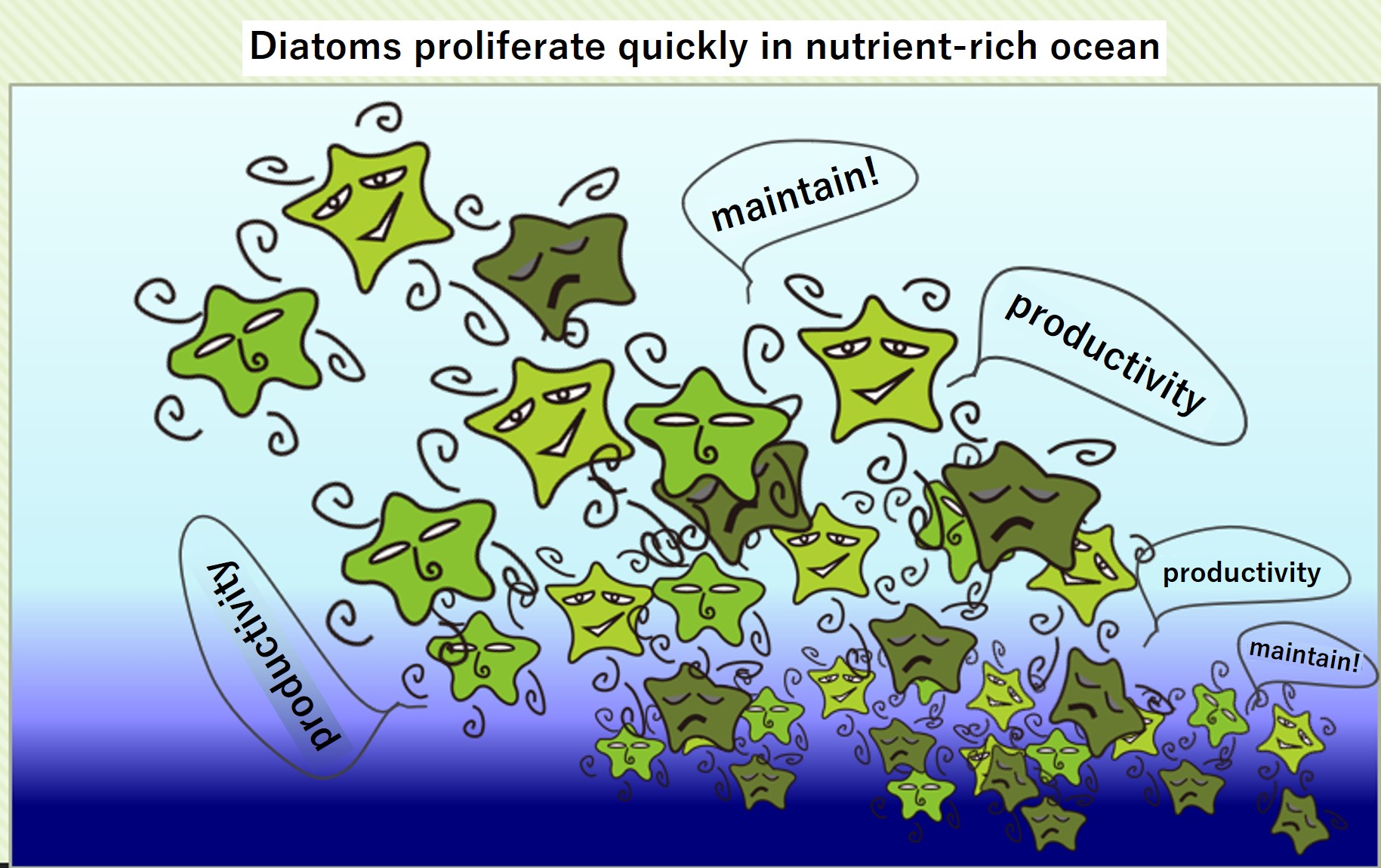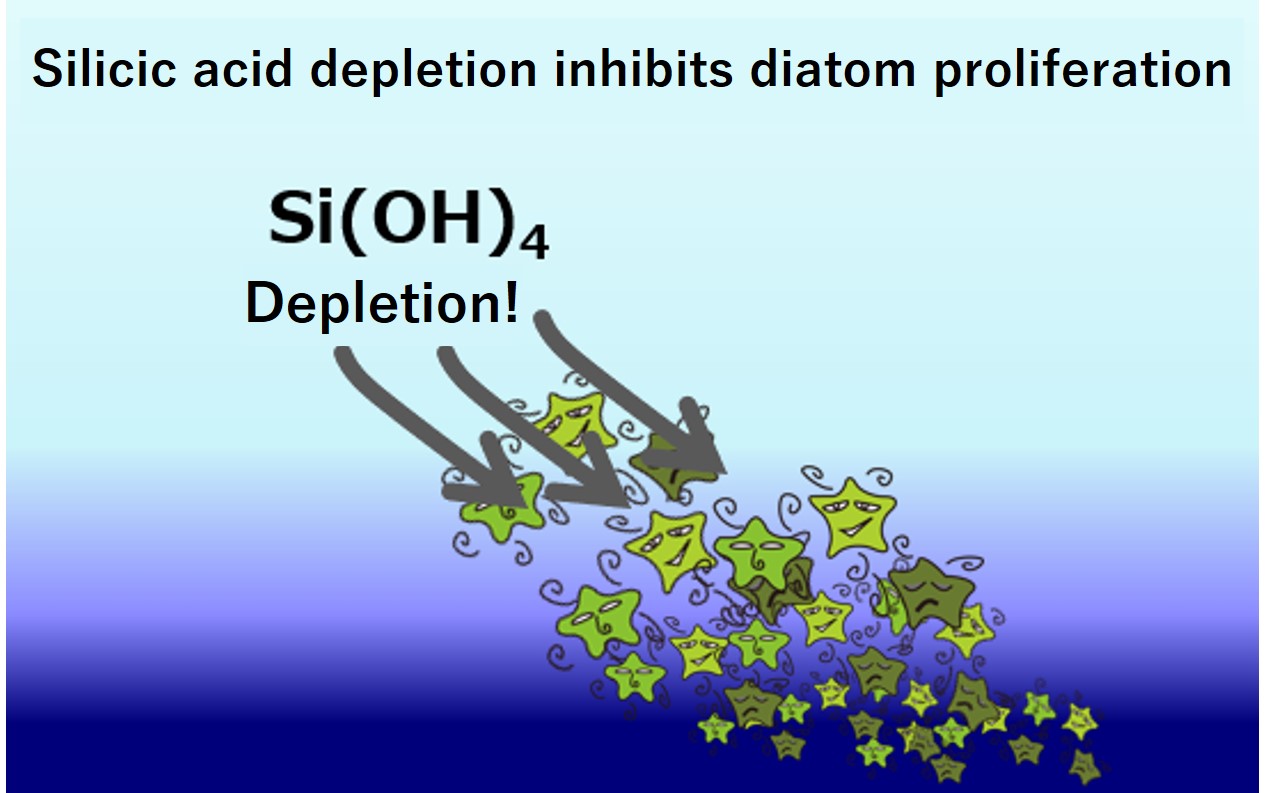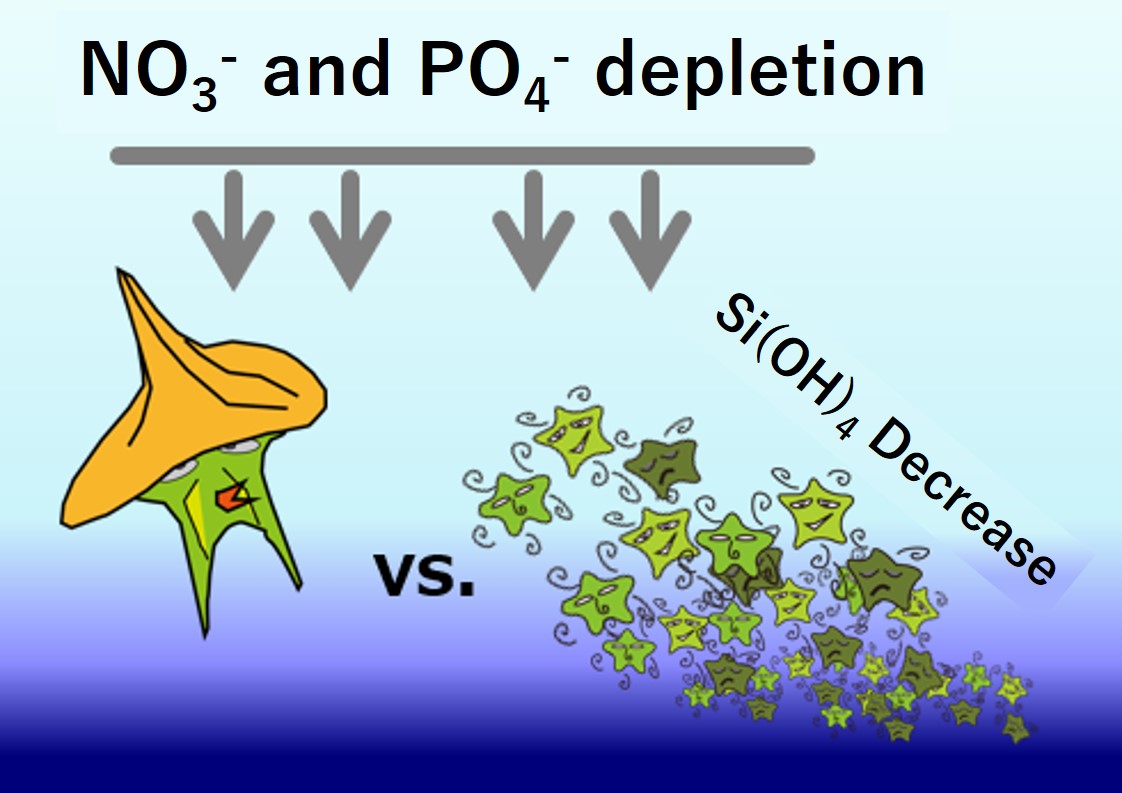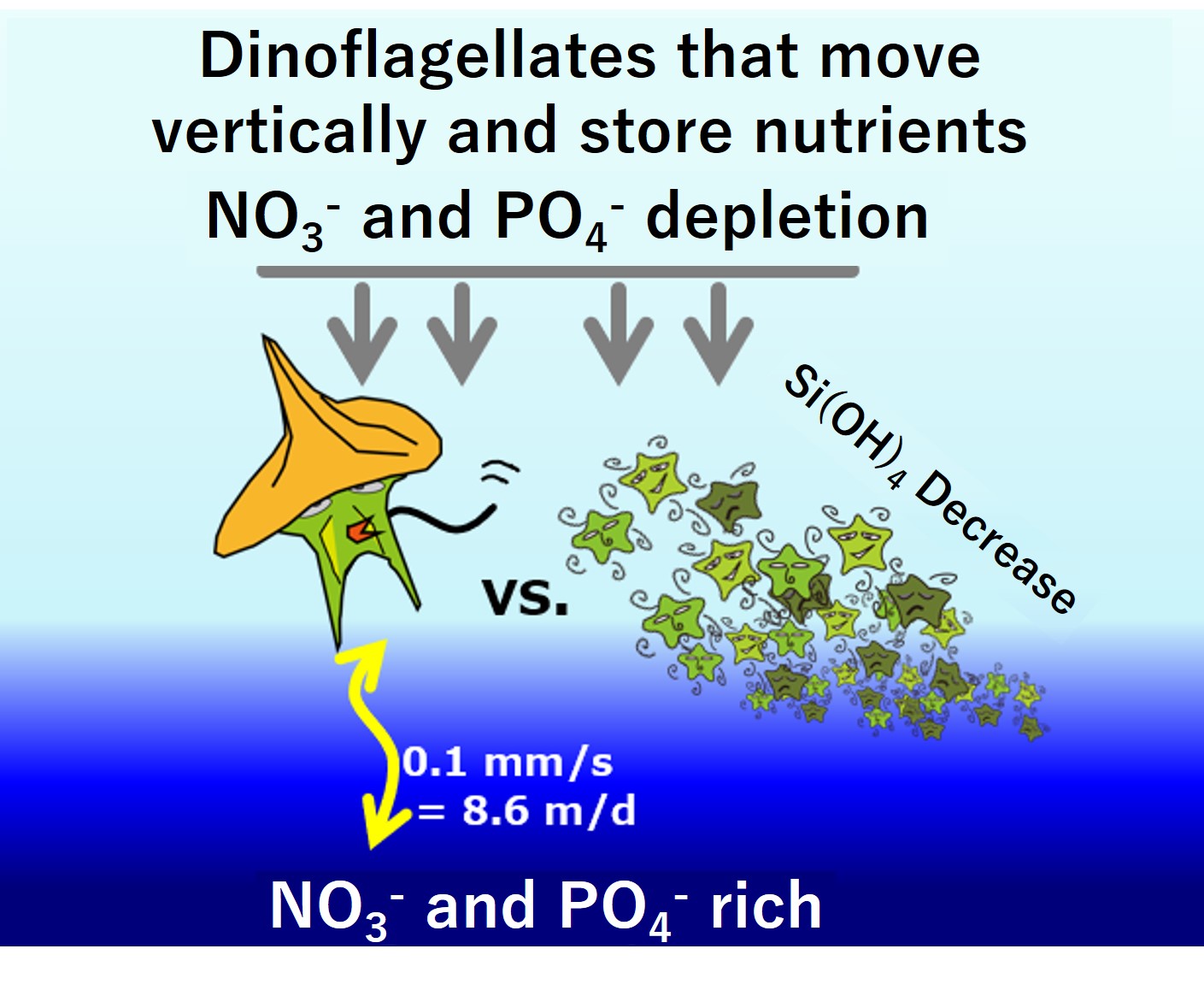In nutrient-rich ocean areas (e.g., subarctic regions), when the light environment improves in spring, diatoms, which proliferate rapidly, quickly increase and become dominant. This is why diatoms maintain high productivity in the subarctic.

As diatoms proliferate, the silicic acid concentration in seawater decreases. Silicic acid depletion may inhibit diatom growth.

If nitrate and phosphate remain among the major nutrients, dinoflagellates and other algae that do not require silicic acid will proliferate.

Deficiency of nitric acid and phosphoric acid is often seen before silicic acid is deficient. Primary production is reduced. As organic matter produced in the surface layer decomposes, nutrients are regenerated into seawater. The regenerated nutrients are used to continue primary production. This is called regenerated production. Phytoplankton are competing with each other for the nutrients.

Dinoflagellates are known to migrate diurnally vertically by moving their own flagella. They are thought to photosynthesize in the surface layer during the day and absorb nutrients in the sub-surface layer at night. The ecology of the diurnal vertical migration of dinoflagellates has been well-studied in coastal areas. The occurrence of toxic dinoflagellate blooms in coastal areas is known as the red tide phenomenon.
